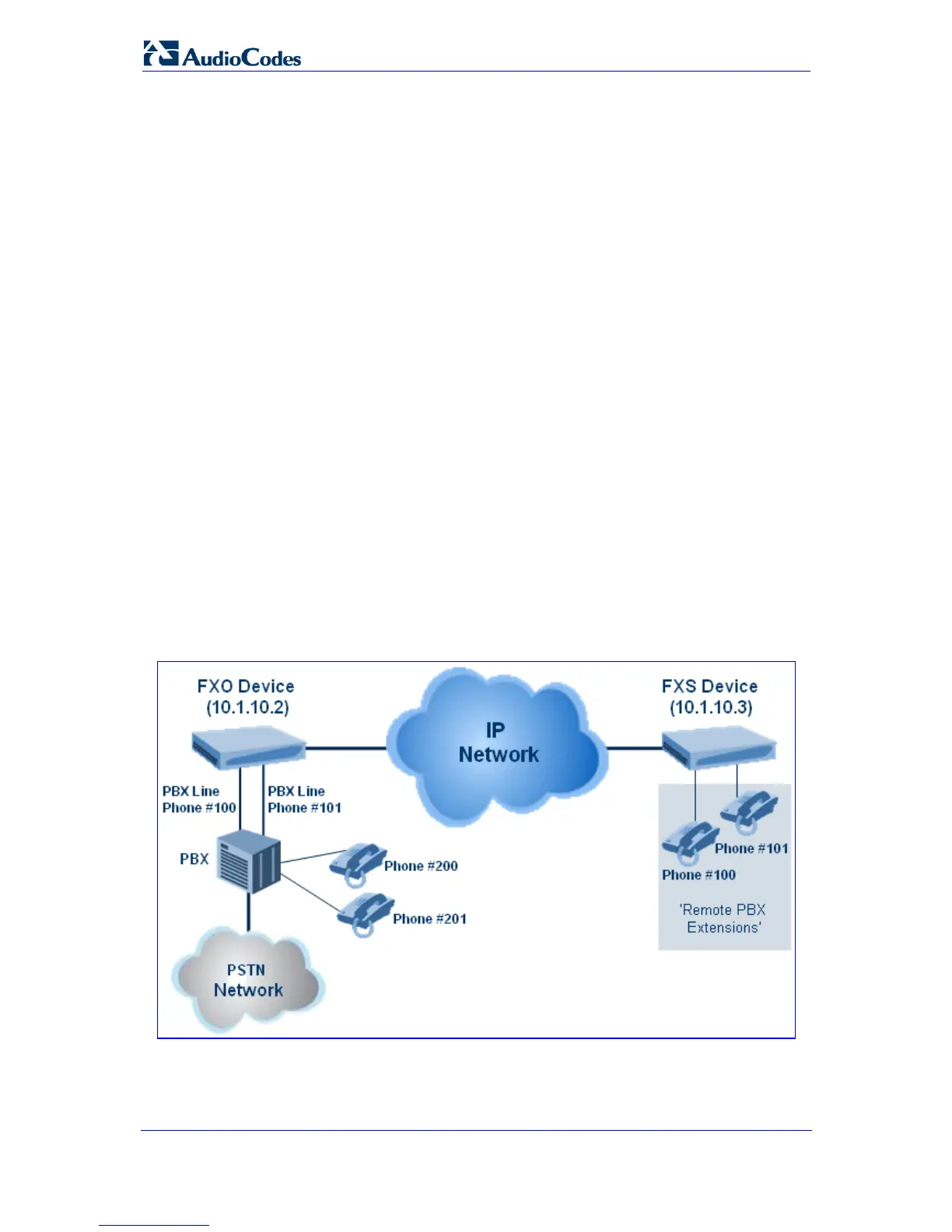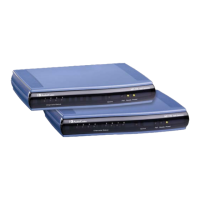SIP User's Manual 444 Document #: LTRT-65412
MP-11x & MP-124
9.21 Remote PBX Extension Between FXO and FXS
Devices
Remote PBX extension offers a company the capability of extending the "power" of its local
PBX by allowing remote phones (remote offices) to connect to the company's PBX over the
IP network (instead of via PSTN). This is as if the remote office is located in the head office
(where the PBX is installed). PBX extensions are connected through FXO ports to the IP
network, instead of being connected to individual telephone stations. At the remote office,
FXS units connect analog phones to the same IP network. To produce full transparency,
each FXO port is mapped to an FXS port (i.e., one-to-one mapping). This allows individual
extensions to be extended to remote locations. To call a remote office worker, a PBX user
or a PSTN caller simply dials the PBX extension that is mapped to the remote FXS port.
This section provides an example on how to implement a remote telephone extension
through the IP network, using 8-port FXO and 8-port FXS devices. In this configuration, the
FXO device routes calls received from the PBX to the ‘Remote PBX Extension’ connected
to the FXS device. The routing is transparent as if the telephone connected to the FXS
device is directly connected to the PBX.
The following is required:
One FXO device with ports connected directly to the PBX lines (shown in the figure
below)
One FXS device for the 'remote PBX extension'
Analog phones (POTS)
PBX (one or more PBX loop start lines)
LAN network
Figure 9-24: FXO-FXS Remote PBX Extension (Example)

